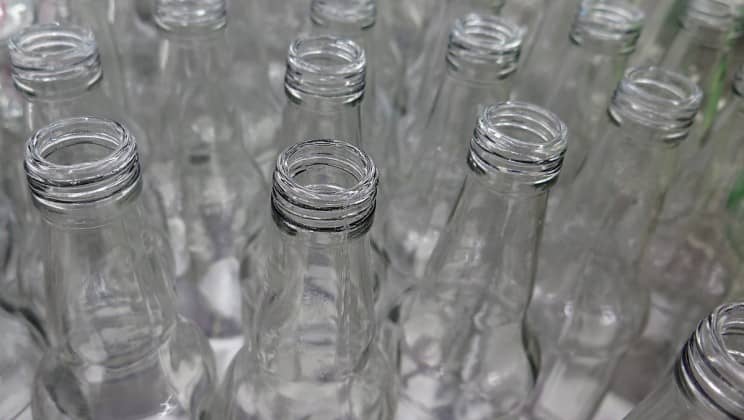It is very much probable that a glass bottle comes into your use every day. In fact, I refuse to believe that you have never used one even if you don’t use one daily. But, have you ever wondered what makes these present-day glass bottles the way they are? Why do they have a specific color? Why are they shaped the way they are?
All your questions will be answered here. But first, we need to understand how they are made. The process starts with various raw materials like silica sand, soda ash, and limestone. The composition is 40% silica sand, 15% soda ash, and 10% limestone. The remaining 35% is a mixture of other compounds and recycled glass.
Recycled glass has a lower melting point and for every 10% recycled glass used, energy is reduced by 2.5%. The color of the glass bottles depends on the addition of compounds. A mixture of iron, sulfur, and carbon is added to make the glass brown or amber. Chrome oxide is added to make the glass green.
It is a common misconception that making glass packaging requires much less energy than metal and plastic alternatives in many cases. Furthermore, the end product very eco-friendly. All these raw material are then mixed together and melted in a furnace at 2730 degrees Fahrenheit over the course of a day to ensure a homogenous mixture.
The molten glass in then portioned out in accordance with the type of glass bottle being made. It is then pushed into a mold and then blown with air, resulting in a near-final product that just needs to cool down. The cooling is controlled through the process of annealing to ensure that the bottles don’t have any thermal shock from differential cooling.
Another cause for confusion in most glass bottles is the series of bumps on the side. These were used as date codes by manufacturers to see how long the bottle remains in circulation. These are now used as mold markers and help in tracing out defects.
Finally, the age-old question of why glass bottles are shaped the way they do. Long.necked bottles have been in production for over a century. The reason is that it allows the packers to seal off the top with a small bottle cap. This reduces the size of the seal and saves money. A smaller seal is also stronger than one spread across a larger area.
Now you don’t have to keep wondering about the things you never knew about glass bottles. You can see a video below to make things even clearer.

